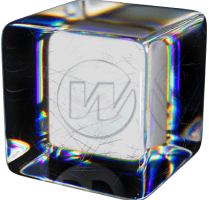
You can safely stake your Wormhole
by following the external link to the resource
Wormhole
EVERSTAKE validator address
Delegating step-by-step
Why delegate W with Everstake?
- Everstake is a premier staking service provider, trusted by over 735,000 users across more than 80+ blockchain networks. Our extensive engagement spans various crypto projects, actively supporting the health and stability of the ecosystems we endorse. Throughout our journey, we have maintained an outstanding record in preventing slashing, ensuring uptime, and delivering optimal performance.
- Our expert team manages a robust and reliable infrastructure, prioritizing the safety of your funds. By delegating with Everstake, you can enhance your yields while enjoying the peace of mind that comes with knowing your tokens are secure.
How can I delegate W with Everstake?
- Visit the Wormhole DAO on Tally for W staking on EVM chains, or visit the Wormhole W Dashboard for staking W on Solana.
- Connect a compatible wallet and sign in.
- Click Start and choose Everstake:
- Everstake's EVM address: 0x7c99baC1052545AD4e4C1E552C9aa36E74125B5d
- Everstake's Solana address: EveRY9LN3Rj2cNQjCK84keYsCAQXnwnm6Csfmr2JtWKu
- Check details and click 'Confirm Delegation,' agree to the Tally Terms of Service, and then click 'Stake for Governance.'
More information on the rewards for the Staking Rewards Program (SRP) Period 1 can be found here.
We recommend using
- Metamask Wallet when you stake W for Wormhole Governance from the EVM chains (Ethereum, Arbitrum, Optimism, Base).
- Phantom, Backpack, or Solflare Wallet when you stake W for Wormhole Governance from Solana.
Staking details
- Delegation activation: Immediately
- Minimum amount to delegate: There are no minimums for participation
- Undelegation period: Immediately
Check the official Wormhole's Stake for Governance FAQ.
Check Everstake's guides:
Blockchain Overview
The Wormhole protocol is a cross-chain messaging platform that enables communication and asset transfers between different blockchain networks, including Ethereum, Solana, Aptos, Sui, Polygon, NEAR Protocol, Binance Smart Chain, etc. It allows decentralized applications (dApps) to function seamlessly across the supported chains. The protocol uses a network of validator nodes called Guardians to ensure secure and efficient cross-chain transactions.
Wormhole also supports cross-chain governance, NFT migration, and the creation of native multi-chain tokens, enhancing interoperability and reducing fees.
The main aim of Wormhole is to build a more connected and efficient blockchain ecosystem by providing a robust infrastructure for cross-chain communication and interoperability.
To learn more, we invite you to read An Essential Guide to Wormhole Gateway and the Portal Token Bridge on our Blog.
Wormhole links
faq
How does Wormhole work?
+Wormhole has a complex architecture and is comprised of several noteworthy components. All the components can be grouped into:
- On-chain components such as Emitter (xAsset Contracts, Relay Contracts, Worm Router Contract), Wormhole Core Contract, and Transaction Logs.
- Off-chain components include Guardian Network, Guardian, Spy, VAAs, Relayer (both specialized and generic), and API.
Let's see what path your tokens take if you want to send them cross-chain. Everything starts with the "Emitter," a contract that triggers the Core Contract. The Core Contract records the event in the Transaction Logs, marking your tokens' travels.
While the on-chain components get your tokens moving, the off-chain components ensure the process is secure and verifiable.
In general, your tokens' journey across chains will include three steps:
Step 1 - Emission: The journey starts with the Emitter, who kicks off the process.
Step 2 - Validation: The Guardians step in next, ensuring everything's in order.
Step 3 - Delivery: The Relayers then transport your tokens to the destination blockchain.
Who are Guardians?
+Guardians are a set of distributed nodes that monitor the state of the connected blockchains. At least two-thirds of the guardians must validate any message in Wormhole, and the guardians have equal weight/voting power in the validation process.
The guardian nodes that provide key functionality to cross-chain transfers are typically large-scale institutional staking service providers.
There are 19 guardian nodes, including some of the largest and most prominent staking providers in the blockchain world, such as Everstake.
Is Wormhole the same as Portal?
+How does Portal Bridge work?
+When you bridge tokens through Portal, the origin token gets locked in a smart contract, and a new Portal wrapped token gets minted on the target chain.
To learn more, please check the official documentation on the Portal Token Bridge.
Wormhole Explorers
+There are several explorers that will help monitor blockchains' state, cross-chain activity, transactions, etc.
